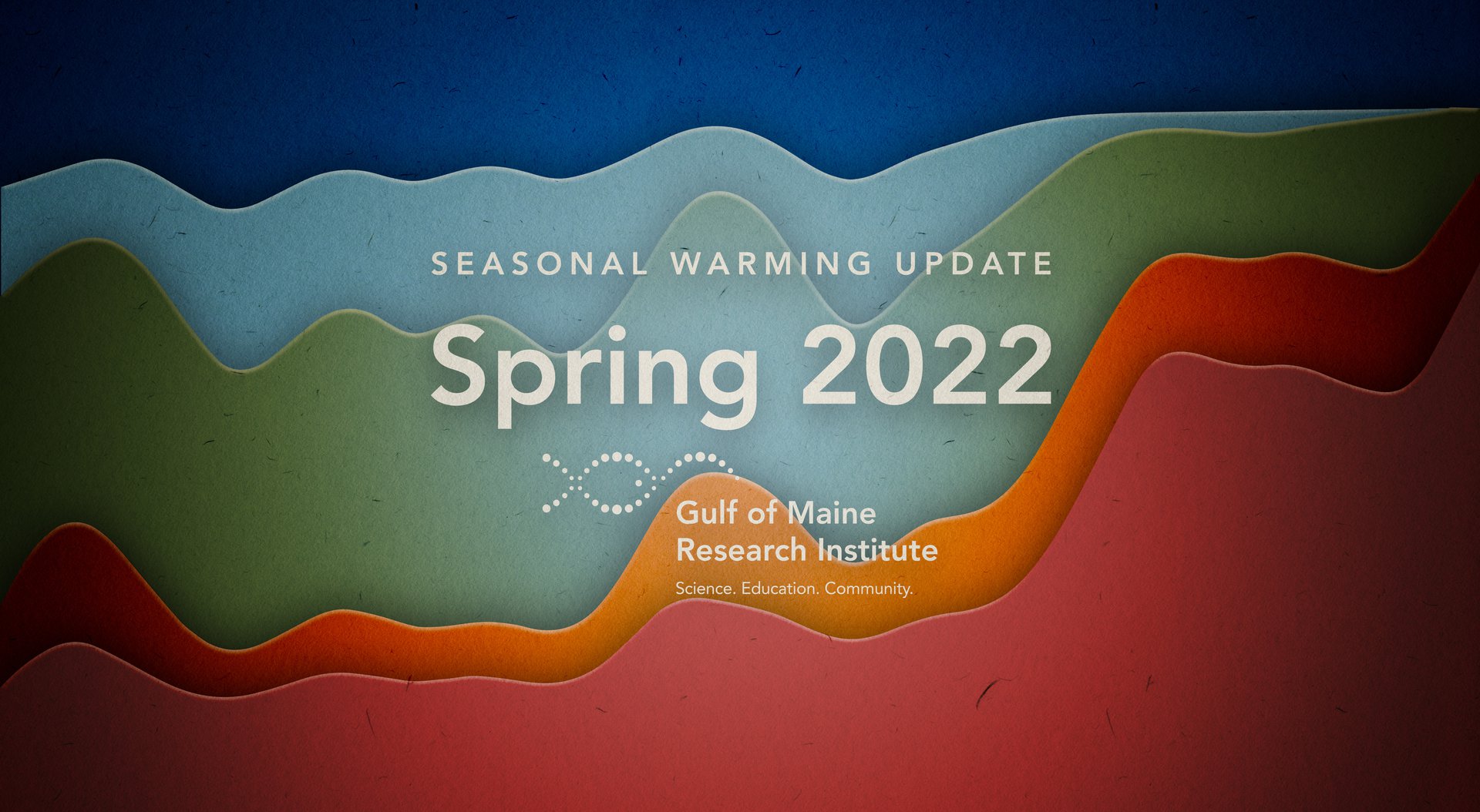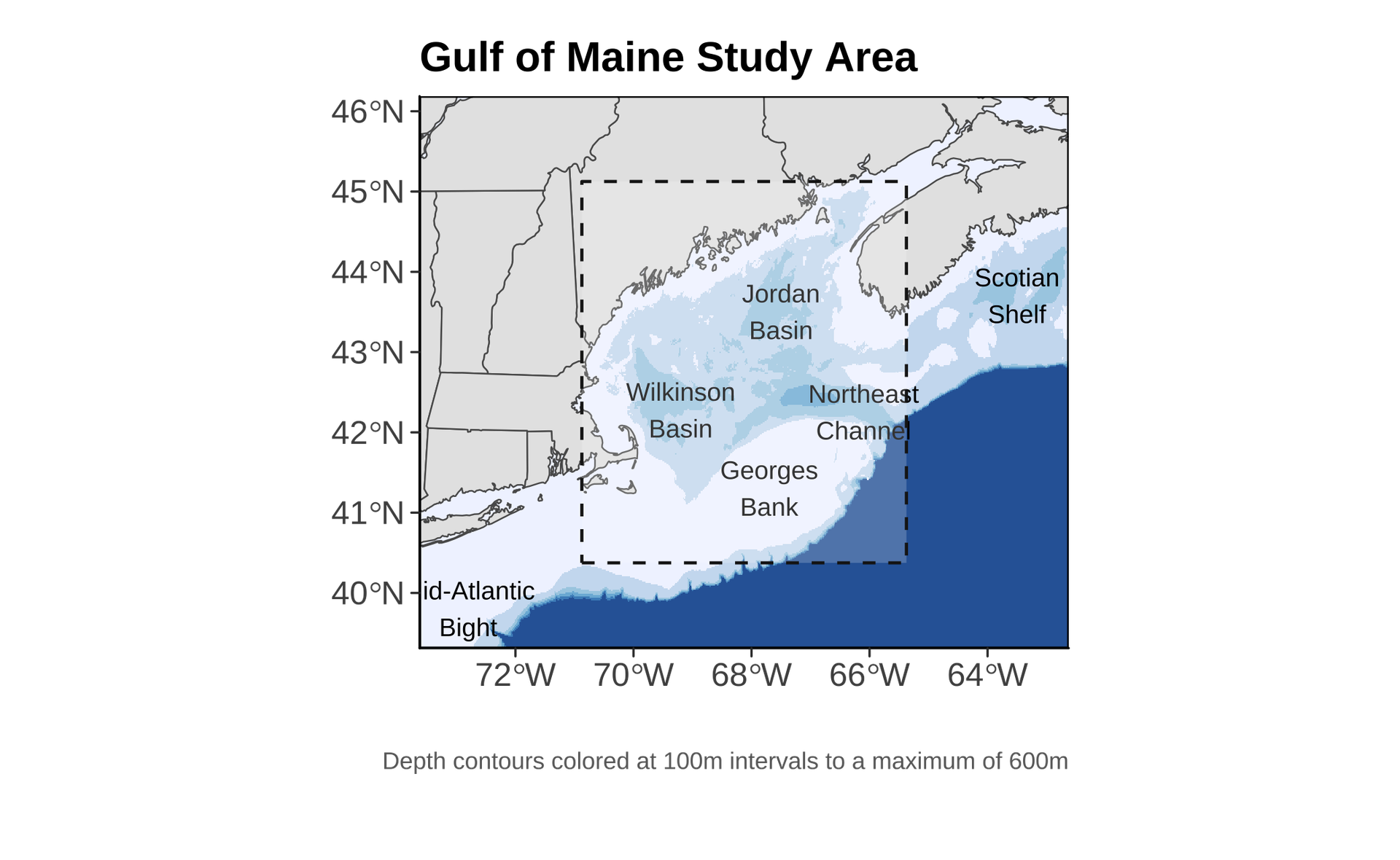Gulf of Maine Warming Update: Spring 2022
Announcements | Jul 1, 2022
Over the past decade, scientists have led a body of research that highlights the rapid pace of warming in the Gulf of Maine. To help keep you informed, we share seasonal and annual updates about conditions in the Gulf of Maine.
Read on for an inside look at what we've learned in our Spring 2022 Gulf of Maine warming update.

About the Updates:
Over the past decade, scientists at the Gulf of Maine Research Institute have led a body of research that highlights the rapid pace of warming in the Gulf of Maine. To keep you informed, we share seasonal updates about sea surface temperature (SST) conditions in the Gulf of Maine.
Note About the Data: The figures in this report are creating using remotely sensed satellite data as part of publicly funded research efforts. We obtained satellite-derived SST data from NOAA’s National Center for Environmental Information (NCEI), with all maps and figures displaying NOAA’s Optimum Interpolation Sea Surface Temperature Data.
Note on Preliminary Data: This dataset has a 2-week latency period, during which values may change due to quality control measures. Any data within 14 days of the publication date may be subject to change.
The Gulf of Maine Region
For analyses like these, it is important to be clear about the spatial extent that “defines” the Gulf of Maine (Fig. 1), as different borders could produce different numbers. The spatial extent we use as the “Gulf of Maine” is displayed below. This area is consistent with previous reports and publications produced by GMRI.
This seasonal report presents an analysis of SST for Spring 2022 (March 1 through May 31).

Highlights
The average SST for the Gulf of Maine during spring 2022 was 45.34°F, which is 2.87°F above the long-term (1982 – 2011) average of 42.47°F.
It was the 3rd hottest spring on record for the period of 1982 – 2022.
Weekly Temperatures
In the below table – which shows observed, long-term average, and departures from the long-term average SST – we can see how the SST for each week this spring compares to a 30-year baseline period (note, climatological averages are calculated with data spanning 1982 through 2011).

Monthly Statistics
Looking at monthly averages (as opposed to week-by-week conditions), we see that May showed the largest deviation from the long-term average, with an average SST anomaly of 3.40°F (Table 2). Each month was 2.4°F or more above the 1982 – 2011 average.

Seasonal Trends and Anomalies in Context
SSTs warming at a rate of .51°F per decade reflect a clear long-term increase in average spring temperatures (Fig. 2). Seasonal averages and daily temperatures also generally remained above the 30-year (1982 – 2011) climatology.

This period of faster warming is part of what appears to be a distinct regime shift in the Gulf of Maine. The drivers of this (e.g., recent shifts in the influence of the Gulf Stream, persistent modes of natural variability, and the possible onset of a weakening in the Atlantic Meridional Overturning Circulation) have been well-documented in the peer-reviewed literature, including through research by GMRI scientists.
How Does 2022 Compare?
2022 was among the warmest springs seen in the Gulf of Maine during this 40+ year period. When compared against all previous springs for which we have reliable satellite data (i.e., back to 1982), this year ranks #3 for hottest spring on record.

Marine Heatwave Conditions
The most commonly used definition of a “marine heatwave” (MHW) is when daily average SSTs exceed the 90th percentile of a climatological (i.e., 30 year) average for at least 5 consecutive days. Successive heatwaves with temporal gaps of 2 days or less are considered part of the same event.
Using this broadly accepted definition, the Gulf of Maine has experienced MHW conditions through spring 2022. A brief reprieve in mid-May lasted less than two days, so it did not constitute a break in the heatwave event (Fig. 4).

Presenting SST conditions in terms of anomalies (Fig. 5 below) as opposed to absolute values (Fig. 4 above) illustrates in greater detail the magnitude of MHW conditions throughout the spring season. The most extreme anomalies this spring occurred in the second half of May, with temperatures exceeding 5°F above the climatological average.

Looking at the full record of daily SST anomalies in the Gulf of Maine (Fig. 6 below), the distinct thermal regime shift beginning around 2010 is evident. Indeed, since 2012, the Gulf of Maine has experienced far more persistent MHW conditions (indicated by solid black lines) than at any other point in the satellite record.

Spatial Perspective on Monthly & Seasonal SST Anomalies
From a spatial perspective (Fig. 7), the Gulf of Maine and surrounding areas experienced above average SSTs for much of the region during spring 2022, but with particularly warm patches to the south and east of Georges Bank that reached seasonally-averaged anomalies of up to 9.4°F.

Average monthly temperature anomalies are displayed below (Fig. 8). The warmest anomalies were concentrated just south of the domain studied in this analysis in March, but by April and May the waters south and east of Georges Bank and near the Northeast Channel were experiencing daily SSTs >8°F warmer than during our climate reference period (1982 – 2011).




